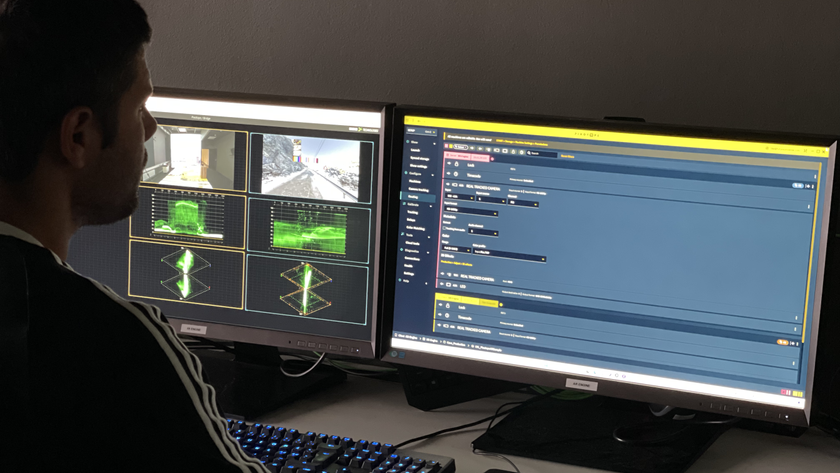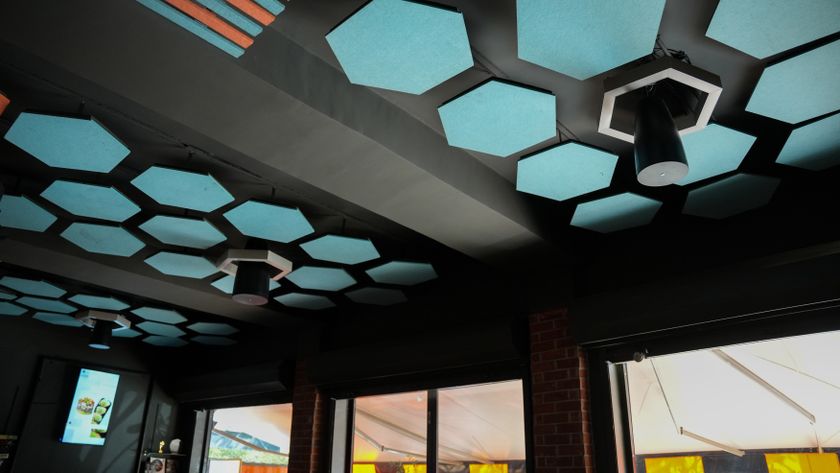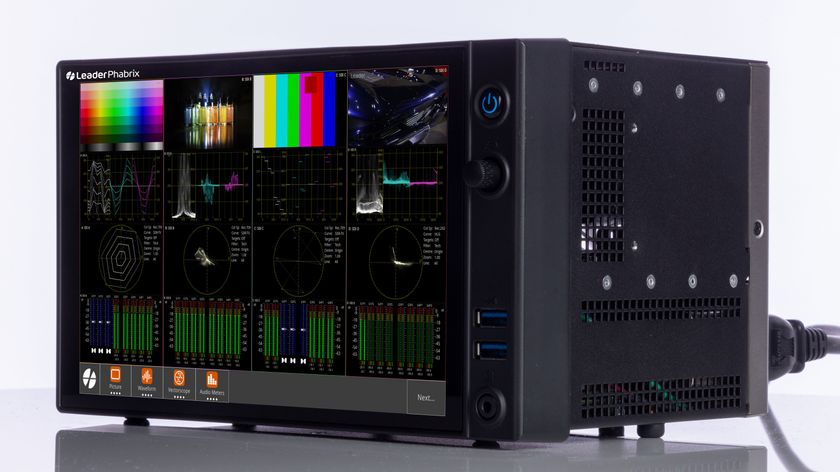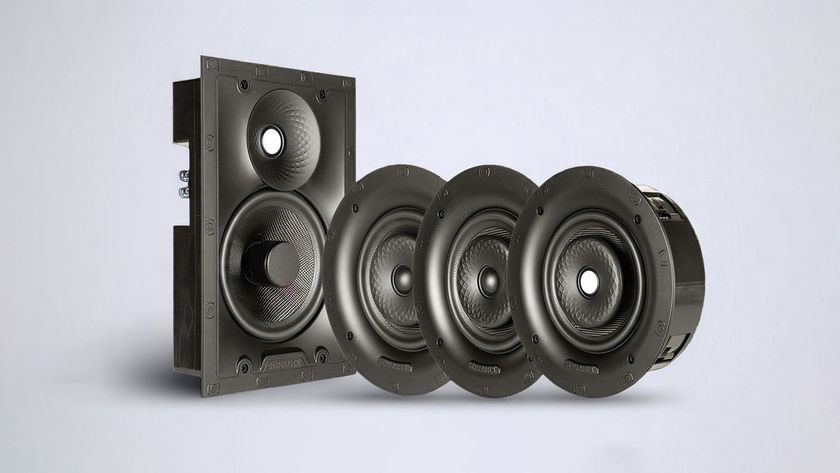As electronics continue to become smaller and more integrated, so too must the equipment that protects them. For systems contractors, this means that surge protection equipment is becoming easier to install.
"Systems contractors are used to buying a surge protector, an outlet strip, an UPS, coax protection and phone line protection-all of these pieces that they then have to integrate, install and deal with," illustrated Jim Folk, vice president of Tripp Lite. "Today, that's been put into one solution."
This offers integrators not only ease-of-installation, customers benefit from more convenient protection at a reasonable price point. Features such as the re-sequencing of modems and routers following a power failure, for example, alleviate some of the hassles associated with the re-booting process. "It really does help the end-user enjoy a better performing system," Folk said. "The systems have advanced to the point where we should be solving installer and customer problems with technology, and it's available."
Michael McCook, co-founder of SurgeX, observes that as technology evolves, there are a number of new options for how surge protection is installed. "We have gone from CRTs to flat panels, so there is an opportunity to put the protection at point-of-use," he said, arguing that this configuration is the 'proper' method of applying protection equipment. "The goal is to put the protection device as close to the equipment being protected as possible so that those lengths of wire are very short, and therefore the wavelengths that can be induced onto those very short wires is very small, and the energy level that can be induced onto those very short wires is very small, and therefore can't really do much harm." SurgeX, which uses filtering technology rather than shunt or switching devices to block out the damaging energy and noise that comes down the power line, now offers zero let-through surge protection: "All of that damaging high-frequency energy, with our technology, is now blocked, contained and squashed."
With the proliferation of Voice over Internet Protocol (VoIP), surge protection and UPS back-up are in the limelight: if your computer is your primary communications device, what happens when the power fails, and how much back-up time should the protection equipment provide? "With VoIP, if the power goes down, it means that you have no telephone. If you have no telephone, how do you call 911?" Folk illustrated, adding the products manufactured by his own organization offer back-up power from anywhere between five minutes and 50 hours. "The contractor needs to check with the local governing body to find out what's required in their area." Some municipalities are in the process of developing their own guidelines, while others are awaiting direction from governing bodies such as the Federal Communications Commission (FCC) on how much emergency back-up time a system should provide.
Another concern is energy consumption: this summer, the Environmental Protection Agency (EPA) issued its final report to Congress on the increasing power consumption of data centers, calling for both government and industry to do something about it. One of the agency's suggestions is that data center managers purchase more energy-efficient UPSs.
Robert E. McFarlane, principal at Shen Milsom & Wilke in New York, NY, notes that one method that data center CIOs are employing is N+1, rather than the more energy-draining 2N UPS configuration.
UPSs, McFarlane explained, are relatively energy efficient, provided that they operate close to their design capacity. The problem, he said, is that in order to achieve a high level of reliability, data center CIOs favor redundant, 2N design: if a facility requires a 50 kW UPS, it will install two, running each at less than 50 percent capacity. This way, if one fails, the other can pick up the entire load without shutting down. The problem, of course, is that this requires a lot of energy.
N+1 UPS uses less energy and offers a more modular approach. "If I need 50 kW and I build it out of 10 kW modules, and put six modules in, now I have a 60 kW system designed to run 50 kW," McFarlane explained. "If any one of those modules fails, or is removed for service or replacement, I still have a 50 kW system, and it still holds up the load." A respectable solution, however it requires that data center managers practice good power management. Several UPS manufacturers are currently developing alternate solutions to address this increasingly significant issue.
McCook notes that integration companies can reap more benefits from the sale of protection equipment if they include it as a starting point in every sale. He likens a power platform to the foundation of a house: if the foundation is weak, it won't be long before it begins to crack, and the owner will need to make expensive repairs. In building a system based on a solid power platform, the integrator is providing a strong solution, and minimizing costly return visits following the termination of the project. "We remove all of the anomalies and problems that are typical in AC power distribution," he said. "Now the integrator can build the system on a very robust, rock-solid platform."
Power Conditioning Glossary
These definitions and more can be found on the SurgeX website, www.surgex.com.
Avalanche Diode: A type of semiconductor component that is normally open circuit until the voltage increases to the point where the device turns on and conducts current. Similar in operation to MOVs but do not degrade with use. Very reliable as long as they are used strictly within their ratings.
Brown out: A sustained under-voltage condition which is low enough to cause equipment malfunction. Most equipment can operate from 105V to 135V without serious performance degradation. A voltage lower than 90V will usually cause functional problems.
Capacitance: The effect where electric charge is stored. A capacitor is an electronic component made specifically to store electric charge. Capacitors are also used to differentiate between frequencies in applications such as crossover networks. A capacitor has high impedance at low frequencies (open circuit at DC) and its impedance decreases as frequency increases.
Inductance: The effect where energy is stored in a magnetic field. An inductor is an electronic component made specifically to store energy by using a magnetic field. Inductors are also used to differentiate between frequencies in applications such as crossover networks. An inductor has low impedance at low frequencies (short circuit at DC) and its impedance increases as frequency increases.
Inrush: The initial current that occurs when a motor or electronic equipment is first turned on. The inrush current is usually several times higher than the normal operating current. In the case of electronic equipment the initial inrush current occurs while the power supply charges up. Equipment with a large current draw can have an inrush current large enough to blow a circuit breaker or damage switches and relays.
Metal Oxide Varistor (MOV): A disc shaped device which is normally open circuit until the voltage increases to the point where the MOV turns on and conducts current. Originally developed to suppress arcing on relay contacts but used extensively in shunt-mode surge protectors. Have a limited lifetime.
Parallel: Devices connected together so that the same voltage appears across all devices.
Power Surge or Voltage Surge: A short term over-voltage condition. Surges caused by lightning are very high power but extremely short in duration, lasting only for 20 to 50 millionths of a second. Surges caused by equipment switching and other sources are also extremely short lasting typically for less than a thousandth of a second.
Series: Devices connected together in a chain so that the same electric current passes through all devices.
Series Mode: A brand of surge protector which uses a high-voltage device to prevent surges and transients from being passed to connected equipment.
Shunt Mode: A type of surge protector which uses MOVs, avalanche diodes, or gas discharge tubes to conduct surge current to the neutral or ground wire.
Switch-mode power supply: The power supply inside electronic equipment converts the 120V AC to the DC required by the circuitry. A switch mode supply is smaller and lighter than a traditional power supply because it switches the current on and off very fast to generate the DC using a small high-frequency transformer rather than a larger traditional power transformer.
Toroidal Transformer: A transformer that is constructed around a ring of iron. This produces a more efficient, compact design with a tighter magnetic field.
Transient or Spike: Similar to a voltage surge in that they cause a very brief over-voltage condition, but are typically less energetic and less damaging.
Voltage Regulation: A means of maintaining the equipment voltage at a constant level. Domestic AC power is distributed at a nominal 120V but this can vary depending on the load and other factors in the distribution. A voltage regulator adjusts for those variations to provide a constant 120V at the equipment.
SurgeX SX1115RT
- The SurgeX SX1115RT surge eliminator and power conditioner provides non-sacrificial protection from spikes, surges and AC line noise. It has remote control capability for use in AC power distribution platforms and can be interfaced with a sequential controller such as the SurgeX SEQ. Remote operation of the SX1115RT is provided via an applied voltage or contact closure, and it is able to report its status back to a master controller. The units are infinitely cascadable for extended AC power platform designs.
Tripp Lite AV550SC Backup Power Block
Tripp Lite has introduced the AV550SC backup power block. The AV550SC provides the highest level of protection for telephone, internet, and coax connections within structured cabling installations found in many new buildings. With reliable battery backup, surge protection and EMI/RFI line noise filtering, the AV550SC provides a complete protection solution for audio/video distribution systems by supporting modems, routers, RF amplifiers, network interfaces, and other equipment through all power problems.
APC Smart-UPS
APC Smart-UPS protects critical data by supplying network-grade power in either traditional tower or rack-optimized form factors. Smart-UPS is the perfect UPS for protecting business critical servers, voice, and data networks, point of sale, retail/bank back office, and ATMs. High real power output, generous runtime, sine wave output, 16-segment LED visual display, and intelligent battery management make Smart-UPS the server class UPS. Included PowerChute management software provides IT administrators the comfort of safe system shutdown and advanced UPS management.
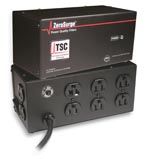
Zero Surge WVR-TSC
Zero Surge's new WVR-TSC power quality filters cancels damaging surge energy from protected equipment, not merely suppress the surge to a lower value. As soon as the TSC filter encounters a transient surge, the surge is filtered and delayed. At the same time, an auxiliary winding develops a canceling voltage, which is generated from surge current flow in the transformer. Adding the canceling voltage to the delayed residual surge voltage equals total surge cancellation. The damaging surge energy is totally removed and will have no effect on any downstream electronic equipment.
Furman Sound AR-20 II
Furman Sound has begun shipping its AR-20 II. The new 20-amp regulator delivers a stable 120 volts of AC power to protect equipment from damaging AC line voltage irregularities, while filtering and purifying AC power to ensure the optimal performance of connected equipment. Furman's AR-20 II accepts input voltages from 97 volts to 141 volts and transforms them to a constant 120 volts. Unlike voltage regulators that use motorized transformer-based technology and switch taps at uncontrolled times, creating voltage spikes and clicks that leak into the audio.
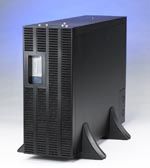
Sola/Hevi-Duty S4K2U-5
Sola/Hevi-Duty has introduced the S4K2U-5 on-line UPS featuring flexible L-N international output voltages of 220/230/240 V, 50/60 Hz to meet the current and future power protection needs of globally-based workstations, robotics, PLCs, process control applications, and industrial automation systems. Space saving in a rack mountable 2U enclosure, the S4K2U-5 eliminates spikes, surges, noise, sags, and brownouts that threaten production uptime, electronics equipment, and overall profitability. In addition, it protects operations from difficult-to-track harmonics and dangerous frequency variations common with stand-by generators.
Shen Milsom & Wilke, Inc....www.smwinc.com
SurgeX...www.surgex.com
Tripp Lite...www.tripplite.com



